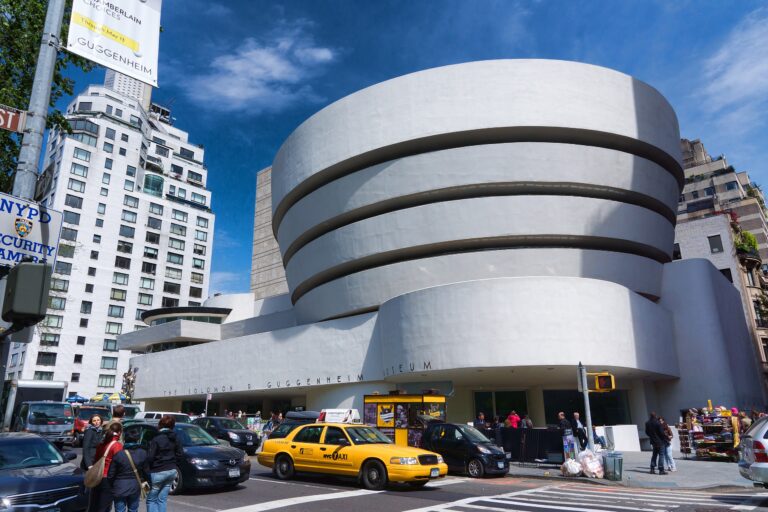The Guggenheim Museum, affectionately known as The Gugg stands as a testament to the dynamic intersection of art, innovation, and architecture. Nestled in the heart of New York City, the Gugg is far more than just a museum—it’s a cultural landmark that continues to captivate millions of visitors each year. From its revolutionary design to its unparalleled art collection, the Gugg represents the spirit of modernism and the evolving narrative of contemporary art.
In this article, we explore what makes the Gugg such a unique global attraction, why it continues to be a trending destination for art lovers, and how it contributes to the broader world of culture and creativity.
A Visionary Design Ahead of Its Time
When discussing the Gugg, it’s impossible not to mention its iconic design. Created by the legendary architect Frank Lloyd Wright, the museum broke conventional boundaries when it opened in 1959. Unlike traditional museums that rely on a grid-based floor plan, Wright designed the Gugg as a spiraling ramp inside a white cylindrical building. This unique structure not only redefined museum architecture but also revolutionized how art could be experienced.
Visitors at the Gugg start at the top and follow a continuous, gentle slope downward, viewing the artwork in a natural and fluid progression. This method of presentation aligns with Wright’s belief that art should be experienced in harmony with its surroundings, and not in isolated, box-like rooms.
The museum’s design was controversial at the time but is now celebrated as one of the most important architectural achievements of the 20th century. Today, the Gugg is recognized as a UNESCO World Heritage Site and remains a symbol of bold artistic vision.
The Gugg’s World-Class Art Collection
Beyond its structure, the Gugg houses one of the finest collections of modern and contemporary art in the world. Featuring works by Pablo Picasso, Wassily Kandinsky, Jackson Pollock, Paul Klee, and Marc Chagall, the museum represents major movements such as Cubism, Surrealism, Abstract Expressionism, and Minimalism.
The museum also showcases rotating exhibitions that include works from both emerging and established artists across various cultures and backgrounds. These exhibitions ensure that the Gugg is always fresh, relevant, and in tune with the global art scene.
For art enthusiasts, a visit to the Gugg is more than just a viewing experience—it’s a deep dive into the evolution of artistic thought over the past century.
Global Expansion of the Guggenheim Legacy
While the original Gugg in New York is the flagship, the Guggenheim Foundation has expanded globally to include sister museums such as:
Guggenheim Museum Bilbao in Spain: Designed by Frank Gehry, this architectural masterpiece helped transform Bilbao into a cultural hub and has had a massive economic and cultural impact, often referred to as the Bilbao Effect.
>Peggy Guggenheim Collection in Venice, Italy: A more intimate museum housing one of the most important collections of European and American modern art.
>Guggenheim Abu Dhabi (currently under development): A major project that will further expand the museum’s global footprint and showcase art from the Middle East and North Africa.
This international network reinforces the Gugg’s mission to make contemporary art accessible to a broader audience, while celebrating artistic diversity from around the world.
A Digital Transformation for Modern Times
In recent years, the Gugg has embraced digital innovation to reach audiences beyond its physical walls. With virtual tours, online exhibitions, educational resources, and social media engagement, the museum has adapted to the digital age without compromising its core mission.
This digital outreach allows global visitors to experience the museum’s offerings from anywhere, making the Gugg not just a physical destination, but a global digital platform for art appreciation.
Additionally, the Gugg regularly hosts lectures, film screenings, artist talks, and workshops, further fostering creativity and intellectual exchange.
Sustainability and Future Vision
As environmental consciousness becomes increasingly important, the Gugg has taken steps toward sustainability in its operations. Energy-efficient lighting, climate control systems, and eco-conscious design practices help reduce the museum’s carbon footprint.
Furthermore, upcoming exhibitions and collaborations aim to explore themes such as climate change, social justice, and global inequality—making the Gugg not just a museum of art, but a hub for social conversation and change.
Conclusion: The Gugg—Where Art Meets the Future
The Gugg is far more than just a museum—it’s a living, breathing cultural phenomenon. From its groundbreaking design by Frank Lloyd Wright to its ever-evolving art exhibitions, the museum is a symbol of innovation, creativity, and global artistic collaboration.
Whether you’re an art enthusiast, a curious tourist, or an architecture lover, the Gugg offers an unforgettable experience that merges form, function, and imagination. As it continues to expand its digital reach and global presence, the Gugg remains at the forefront of cultural relevance in the 21st century.
So next time you’re in New York—or browsing from halfway across the world—don’t miss the opportunity to explore what makes The Gugg a true masterpiece.


